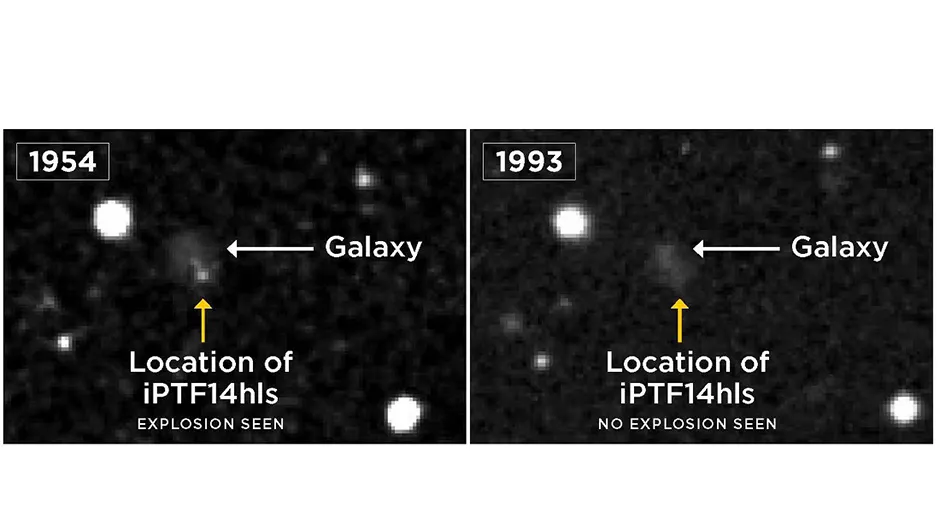Like a celestial horror villain, an exploded star has burst back to life after 50 years.A supernova from 2014 that has only recently faded may have been the revived remnant of a previous explosion in 1954.
The stellar blast could be a new class of supernova.
In September 2014 the intermediate Palomar Transient Factory team at the University of California, Santa Barbara (USCB) discovered a new supernova in a distant galaxy, named iPTF14hls.
At first it appeared to be a run-of-the-mill Type II-p supernova caused by the rapid collapse of a massive star, which should have dimmed after 100 days or so.
Instead, the supernova began to grow in brightness after a few months, and remained bright for a total of 600 days.
“Supernova iPTF14hls may be the most massive stellar explosion ever seen,” says Lars Bildsten, director of USBC’s Kavli Institute for Theoretical Physics.
“For me, the most remarkable aspect of this supernova was its long duration, something we have never seen before.
It certainly puzzled all of us as it just continued shining.”
When consulting archival data, the team found that a supernova had previously been seen in 1954 in the same location.
Somehow, the star had survived and lived to explode again 50 years later.

This earlier explosion could be an important clue to the explosion's identity, as some researchers suggest it is the first observed example of something called a pulsational pair-instability supernova.
These occur when massive stars become so hot that they convert energy into matter and antimatter, creating an explosion that blows off the star’s outer layers while leaving the core intact.
The process might repeat itself for decades before the star eventually collapses into a black hole.
“These explosions were only expected to be seen in the early Universe and should be extinct today,” says Andy Howell who leads the supernova group at the Las Cumbres Observatory.
“This is like finding a dinosaur still alive today.
If you found one, you would question whether it truly was a dinosaur.”
An alternative explanation to iPTF14hl's strange behaviour is that it is a completely new kind of supernova.
“This supernova breaks everything we thought we knew about how they work,” says lead author Iair Arcavi from UCSB.
“It’s the biggest puzzle I’ve encountered in almost a decade of studying stellar explosions.”
